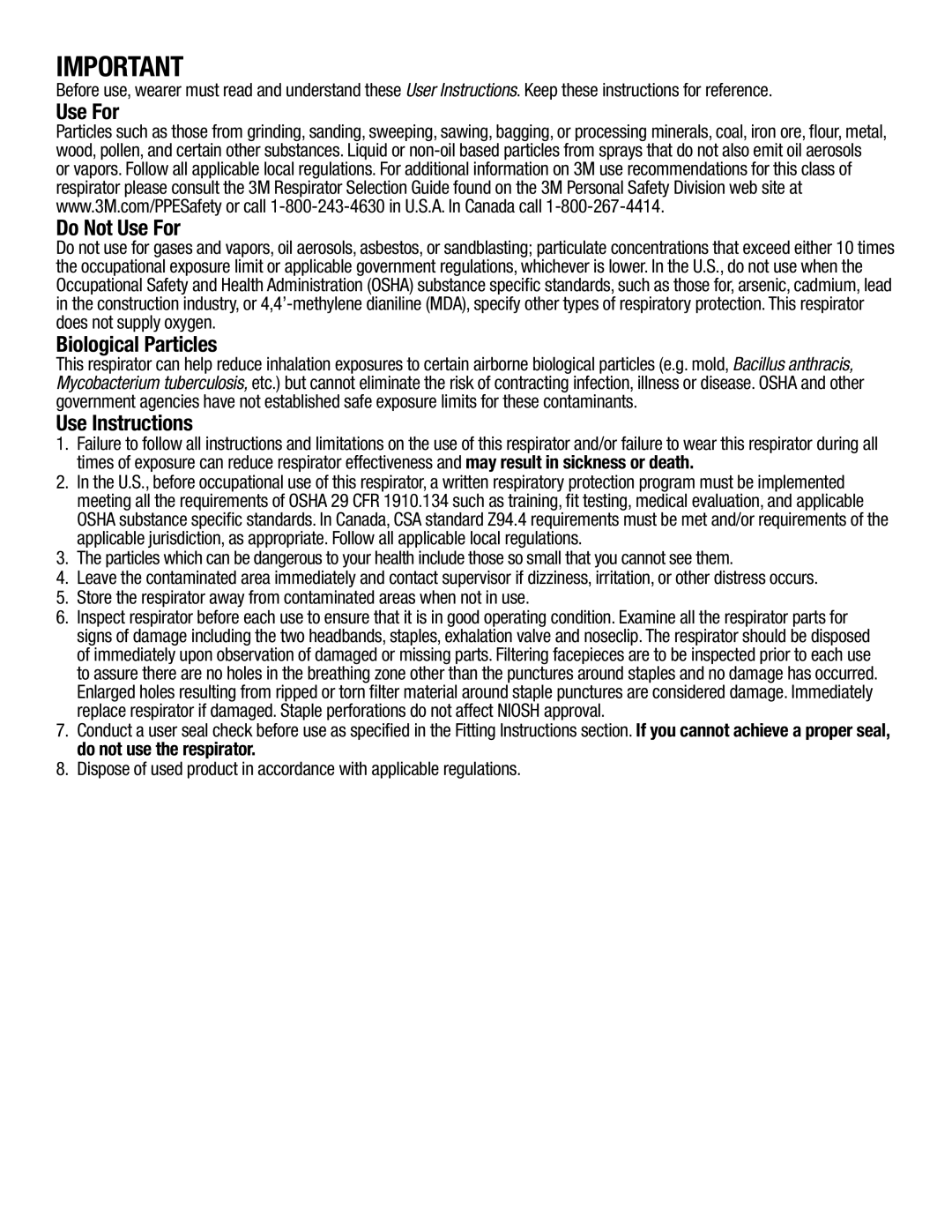IMPORTANT
Before use, wearer must read and understand these User Instructions. Keep these instructions for reference.
Use For
Particles such as those from grinding, sanding, sweeping, sawing, bagging, or processing minerals, coal, iron ore, flour, metal, wood, pollen, and certain other substances. Liquid or
Do Not Use For
Do not use for gases and vapors, oil aerosols, asbestos, or sandblasting; particulate concentrations that exceed either 10 times the occupational exposure limit or applicable government regulations, whichever is lower. In the U.S., do not use when the Occupational Safety and Health Administration (OSHA) substance specific standards, such as those for, arsenic, cadmium, lead in the construction industry, or
Biological Particles
This respirator can help reduce inhalation exposures to certain airborne biological particles (e.g. mold, Bacillus anthracis, Mycobacterium tuberculosis, etc.) but cannot eliminate the risk of contracting infection, illness or disease. OSHA and other government agencies have not established safe exposure limits for these contaminants.
Use Instructions
1.Failure to follow all instructions and limitations on the use of this respirator and/or failure to wear this respirator during all times of exposure can reduce respirator effectiveness and may result in sickness or death.
2.In the U.S., before occupational use of this respirator, a written respiratory protection program must be implemented meeting all the requirements of OSHA 29 CFR 1910.134 such as training, fit testing, medical evaluation, and applicable OSHA substance specific standards. In Canada, CSA standard Z94.4 requirements must be met and/or requirements of the applicable jurisdiction, as appropriate. Follow all applicable local regulations.
3.The particles which can be dangerous to your health include those so small that you cannot see them.
4.Leave the contaminated area immediately and contact supervisor if dizziness, irritation, or other distress occurs.
5.Store the respirator away from contaminated areas when not in use.
6.Inspect respirator before each use to ensure that it is in good operating condition. Examine all the respirator parts for signs of damage including the two headbands, staples, exhalation valve and noseclip. The respirator should be disposed of immediately upon observation of damaged or missing parts. Filtering facepieces are to be inspected prior to each use to assure there are no holes in the breathing zone other than the punctures around staples and no damage has occurred.
Enlarged holes resulting from ripped or torn filter material around staple punctures are considered damage. Immediately replace respirator if damaged. Staple perforations do not affect NIOSH approval.
7.Conduct a user seal check before use as specified in the Fitting Instructions section. If you cannot achieve a proper seal, do not use the respirator.
8.Dispose of used product in accordance with applicable regulations.
